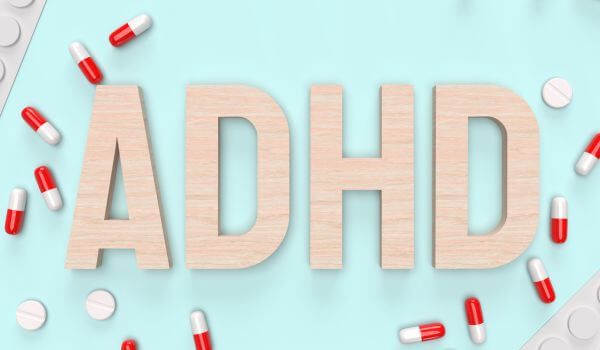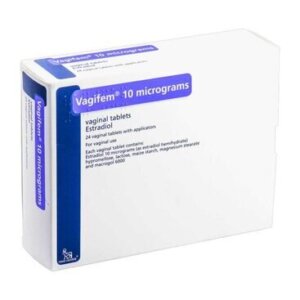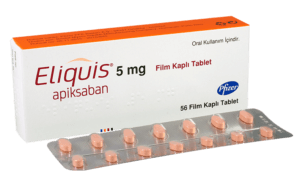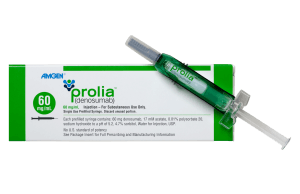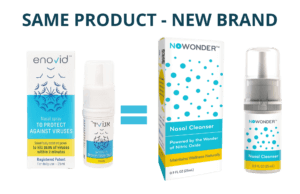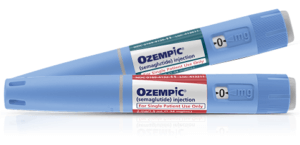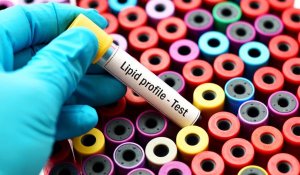 In case you’ve just had a blood test and it came back with a warning about high cholesterol or triglycerides, you may need some help in understanding what your doctor is saying when there’s talk about new terms like ‘lipid metabolism’ and ‘lipid regulator’ drugs.
In case you’ve just had a blood test and it came back with a warning about high cholesterol or triglycerides, you may need some help in understanding what your doctor is saying when there’s talk about new terms like ‘lipid metabolism’ and ‘lipid regulator’ drugs.
Sometimes, we hear a word or phrase and it’s immediately associated with bad things. In some cases, this reaction is understandable because there’s no way to take a positive stance on things like ‘cancer’ or ‘high blood pressure’. So, many people react negatively to the word ‘cholesterol’ because it has received such bad publicity. However, cholesterol is an essential component of every living thing. The body needs cholesterol for many crucial functions, including building cell membranes, producing hormones like estrogen and testosterone, aiding in the digestion of fats, and synthesizing vitamin D. You can’t live without enough cholesterol, but excess cholesterol is harmful. A healthy level is essential for maintaining overall well-being. Lipid regulators are medications that control the levels of cholesterol in your blood.
But what exactly are lipid regulators? How do they work? Are statins the only option? And more importantly, how do you better understand all the confusing terminology and acronyms that talk about enzymes and cholesterol subtypes so that you can make better sense of the options?
I will try to explain the science of lipid metabolism and the facts you need to understand about how medications can reduce the damage that high cholesterol does to a person’s health.
Lipid regulator drugs: A quick primer 
“Lipid regulators” or “lipid-lowering agents” are medications designed to correct abnormal levels of fats (lipids) in the blood, including cholesterol and triglycerides. The goal is to reduce the risk of cardiovascular disease, a blanket term for conditions like heart attacks, strokes, and peripheral artery disease.
The primary villain in this story is low-density lipoprotein (LDL) cholesterol, often labeled as “bad cholesterol.” When LDL builds up in the arteries, it contributes to plaque formation and inflammation. If this goes on unchecked, it can start to restrict the flow of blood throughout the body, forcing the heart to work much harder, and eventually can lead to life-threatening outcomes like coronary artery disease, heart attacks, or strokes. Most lipid regulators work by either reducing LDL, increasing high-density lipoprotein (HDL or “good cholesterol”), lowering triglycerides, or some combination of these.
The lipid regulation dictionary
- ACAT: Acyl-CoA cholesterol acyl transferase is an enzyme that plays a crucial role in cholesterol metabolism by converting cholesterol into cholesteryl esters, which are then stored within cells.
- ACL inhibitor: ACL (ATP citrate lyase) inhibitors, like bempedoic acid, block an enzyme involved early in the cholesterol synthesis pathway. Bempedoic acid inhibits ACL, an enzyme involved in cholesterol synthesis in the liver, thus reducing LDL-C production. These drugs reduce the liver’s ability to produce cholesterol by inhibiting ACL. They are often used in patients who can’t tolerate statins or need additional LDL lowering on top of statins.
- Anti-inflammatory: A property of some lipid regulators that reduces inflammation, an important factor in cardiovascular disease.
- Antisense oligonucleotide: A genetic therapy that targets specific RNA sequences to reduce the production of harmful proteins.
- Bile acid sequestrant: A drug that binds bile acids in the gut, forcing the liver to use more cholesterol to make new bile.
- Cardiovascular disease: A group of disorders involving the heart and blood vessels, including coronary artery disease, heart attack, and stroke.
- Cholesterol absorption inhibitor: These drugs prevent the small intestine from absorbing cholesterol from food. This forces the liver to draw more cholesterol from the blood to meet its needs, reducing LDL levels.
- Cholesterol synthesis: The process by which the liver produces cholesterol, a substance necessary for cell structure but harmful in excess.
- Enzymes: Enzymes play a crucial role in cholesterol synthesis and metabolism. They facilitate the conversion of precursor molecules into cholesterol, regulate its storage, and break down cholesterol into bile acids for elimination. Specific enzymes involved in these processes include HMG-CoA reductase, ACAT, and LCAT.
- Fatty acids: Building blocks of fats in the body. Some types, especially saturated and trans fats, contribute to high cholesterol levels.
- Fibrates: Work by activating peroxisome proliferator-activated receptors (PPARs), which are involved in lipid metabolism. This leads to decreased triglycerides and increased HDL. Has variable effects on LDL cholesterol and may only lower LDL in some patients,
- HDL (high-density lipoprotein) cholesterol: Carries LDL cholesterol away from the arteries and back to the liver, where it is broken down and eliminated from the body. Called “good cholesterol”.
- HMG-CoA reductase: The key enzyme in lipid metabolism in the liver’s cholesterol production pathway. It catalyzes the rate-limiting step in cholesterol synthesis, making it a prime target for statins. By inhibiting this enzyme, statins significantly reduce cholesterol output by the liver.
- LCAT: Lecithin-cholesterol acyltransferase enzyme plays a crucial role in cholesterol metabolism by helping to transport cholesterol back to the liver for removal or redistribution. This process is essential for the efficient removal of cholesterol from the body.
- LDL (low-density lipoprotein) cholesterol: Transports cholesterol to tissues and is associated with artery plaque buildup. Called “bad cholesterol”.
- LDL receptor: A molecule on liver cells that binds LDL cholesterol and removes it from the bloodstream.
- Nicotinic acid: Niacin is a B-vitamin used to raise HDL and lower triglycerides, though now less commonly prescribed due to side effects.
- PCSK9 inhibitors: The newest class of cholesterol-lowering drugs, that increase the liver’s ability to remove LDL from the blood. PCSK9 is a protein that regulates the number of LDL receptors on the surface of liver cells. When PCSK9 binds to these LDL receptors, it leads to their degradation, reducing the liver’s ability to remove LDL cholesterol (“bad” cholesterol) from the blood. PCSK9 inhibitors block PCSK9 from binding to LDL receptors, and increasing the number of LDL receptors available to remove LDL cholesterol from the bloodstream, ultimately lowering LDL cholesterol levels.
- PPARs: Peroxisome proliferator-activated receptors (PPARs) play a key role in regulating how the body processes fats, making them important targets for treating metabolic disorders. PPAR alpha activates genes involved in fatty acid uptake, transport, and oxidation, promoting the breakdown of fats for energy.
- Proprotein convertase subtilisin/kexin type 9 (PCSK9): A protein that limits how many LDL receptors the liver can use. Inhibiting PCSK9 boosts cholesterol removal.
- Rate-limiting step: The slowest step in a biochemical pathway, which determines the overall rate of the process, a common target for drug action.
- Reductase inhibitors: Drugs (like statins) that block enzymes responsible for producing cholesterol.
- Statin therapy: Treatment with drugs that inhibit HMG-CoA reductase to lower LDL cholesterol levels.
- Tolerated statin: A statin medication that does not cause significant side effects in a given patient.
Drugs that control lipids
This is a list of the wide range of lipid reguator drugs that IsraelPharm currently sells, coveing the full range of all the possible treatments that doctors can choose from.
| Title | Class | Type | Current Price |
| Nexletol | ACL inhibitor | Brand | 187.00 |
| Questran | Bile acid sequestrants | Brand | 39.00 |
| Zetia | Cholesterol absorption inhibitor | Generic | 64.00 |
| Nexlizet | Cholesterol absorption inhibitor + ACL inhibitor | Brand | 171.00 |
| Liptruzet | Cholesterol absorption inhibitor + Statin | Brand | 103.00 |
| Bezalip | Fibrate (PPAR activator) | Brand | 23.00 |
| Tricor | Fibrate (PPAR activator) | Brand | 39.00 |
| Lovaza | Omega-3 fatty acid | Brand | 66.00 |
| Vascepa | Omega-3 fatty acid | Brand | 503.00 |
| Leqvio | PCSK9 inhibitor | Brand | 2800.00 |
| Praluent | PCSK9 inhibitor | Brand | 1016.00 |
| Repatha | PCSK9 inhibitor | Brand | 573.00 |
| Crestor | Statin | Brand | 34.00 |
| Lescol | Statin | Generic | 17.00 |
| Lipitor | Statin | Generic | 17.00 |
| Livalo | Statin | Generic | 30.00 |
| Pravachol | Statin | Generic | 20.00 |
| Zocor | Statin | Brand | 19.00 |
| Niaspan XR | Vitamin B3 | Brand | 277.00 |
Prices are correct at time of publication, and are subject to change.
FAQs about lipid regulator drugs
What is a lipid-regulating drug?
A lipid-regulating drug is any medication that adjusts the levels of fats in the blood, including cholesterol and triglycerides. These drugs work through different mechanisms: some reduce cholesterol synthesis in the liver (like statins), others enhance the removal of LDL cholesterol (like PCSK9 inhibitors), and some prevent cholesterol absorption from food (like cholesterol absorption inhibitors). The primary goal of these medications is to lower the risk of cardiovascular events by managing lipid levels more effectively than lifestyle changes alone.
What can I take instead of statins to lower cholesterol?
If statins aren’t well tolerated or effective enough, other options include cholesterol absorption inhibitors such as Zetia and Nexlizet (which block cholesterol absorption in the gut), ACL inhibitors like Nexletol (a newer oral agent), and bile acid sequestrants like Questran. Supplements like red yeast rice or omega-3 fatty acids (Lovaza, Ascepa) are also sometimes used. The most recent addition to the range of lipid regulators is PCSK9 inhibitors, which are injectable agents that boost LDL receptor activity, such as Lequiva, Praluent, and Repatha. Doctors choose the best alternative depending on the patient’s LDL level, cardiovascular risk, and tolerance to side effects.
How to stop the liver from producing cholesterol?
The liver makes cholesterol via a complex pathway regulated by the HMG-CoA reductase enzyme. Statins work by inhibiting this enzyme, effectively slowing the production of cholesterol. Newer drugs like Nexletol act upstream in this same pathway. Lifestyle changes, especially weight loss, exercise, and dietary adjustments, can also modulate cholesterol synthesis but usually aren’t enough on their own for those at high cardiovascular risk.
What are lipid medications?
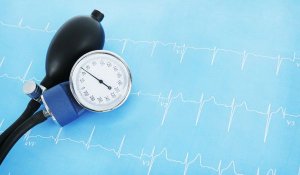
What are examples of lipid regulators?
Examples are statins, PCSK9 inhibitors, ACL inhibitors, bile acid binders, fibrates, and cholesterol absorption inhibitors. They can also be combined into a single drug to address different pathways and achieve better results. These drugs target different points in lipid metabolism to help lower cardiovascular risk. Vitamin B3 (niacin) also qualifies as a lipid regulator, though it is now less favored due to facial flushing (which can be offset by including laropiprant) and potential liver toxicity.
What regulates lipids?
Lipid levels in the body are regulated by liver function, hormonal signals (like insulin), diet, genetic factors, and medications. The liver plays the central role in lipid metabolism, determining how much cholesterol is produced and removed. Drugs that either slow production, enhance removal, or block absorption are key tools in medical lipid regulation.
What are the four main examples of lipids?
The four primary lipids found in the human body are triglycerides, phospholipids, cholesterol, and fatty acids. Triglycerides store energy, phospholipids make up cell membranes, cholesterol stabilizes membranes and serves as a hormone precursor, and fatty acids are the building blocks of all fats.
How to increase lipid metabolism?
Lipid metabolism can be boosted through physical activity, caloric restriction, some medications (like fibrates), and possibly supplements such as omega-3s. Some hormones, like thyroid hormone, also increase lipid turnover. Avoiding simple carbs and trans fats, while increasing fiber intake, can support more efficient fat utilization.
What are the disorders of lipid metabolism?
Common disorders include familial hypercholesterolemia, hypertriglyceridemia, and mixed dyslipidemia. These conditions involve imbalances in the production or clearance of cholesterol and triglycerides. They increase the risk of cardiovascular events and often require lifelong therapy.
What are lipid-based drugs examples?
The term ‘lipid-based drugs’ has nothing to do with cholesterol or blood lipid levels. Some drugs are formulated using lipid-based delivery systems to improve absorption. Examples include some cancer medications, antiviral drugs like Paxlovid, and even some forms of vitamin supplements.
What is a lipid in drugs?
In pharmaceutical terms, a lipid can refer to a fat-like molecule used to encapsulate a drug or help it dissolve (see the question above.) Lipids improve the bioavailability of some poorly soluble medications. These aren’t always related to cholesterol treatment but are vital in drug formulation.
What are lipid drug targets?
Drug targets in lipid therapy include enzymes like HMG-CoA reductase, transport proteins like NPC1L1 (blocked by cholesterol absorption inhibitors), and receptors like LDL receptors enhanced by PCSK9 inhibitors. All of these work to alter the process of lipid metabolism that underlies the production of cholesterol. Understanding these targets helps doctors decide on the right lipid regulator drugs to match a patient’s specific lipid abnormalities.
What are examples of things that are high in lipids?
Butter, oils (especially coconut and palm oil), fatty meats, cheese, cream, and some nuts and seeds are among foods high in lipids. While not all dietary fats are harmful, a high intake of saturated or trans fats can elevate blood cholesterol levels and increase cardiovascular risk.
What is the first drug of choice for cholesterol?
Statins remain the first-line lipid regulator drugs for high LDL cholesterol due to their extensive evidence base, safety profile, and ability to reduce cardiovascular events. Lipitor (Litorva/Torid) and Crestor are the most commonly prescribed due to their potency and lower incidence of side effects.
What cholesterol medicine helps you lose weight?
No lipid regulator drugs are approved specifically for weight loss. However, some patients on PCSK9 inhibitors or ACL inhibitors report modest weight changes. Lifestyle modifications remain the cornerstone for meaningful weight reduction.
How can I lower my lipids without medication?
Dietary changes, especially reducing the intake of saturated fats and increasing fiber, plus regular exercise, weight loss, and quitting smoking, can significantly improve lipid profiles. Supplements like the Gut Pack (which delivers probiotics with fiber and nutrients like L-glutamine and triphala) help get your digestive system back to its best behavior. Losing weight is easier with the Healthy Weight Pack, which lets you slim down and power up. Omega-3 supplements may also help. However, for people with genetic lipid disorders like familial hypercholesterolemia or who already have a history of cardiovascular problems, lifestyle alone may not suffice, and consultation with a healthcare professional is essential.




